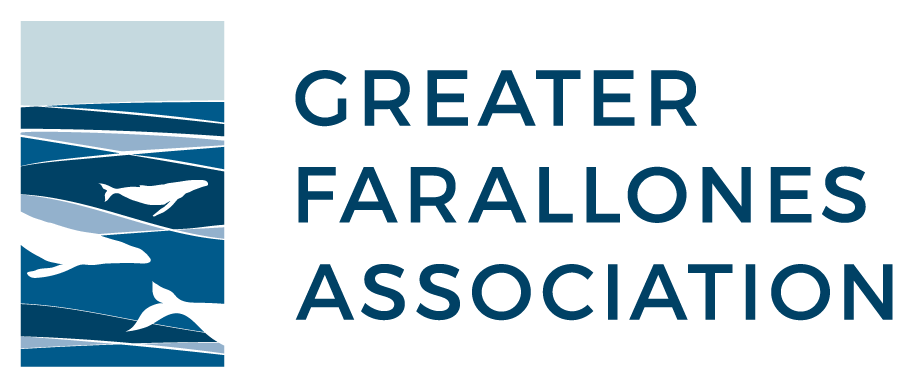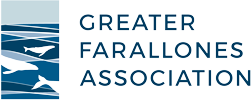Keeping up with Kelp: An Update from the 2023 Field Season
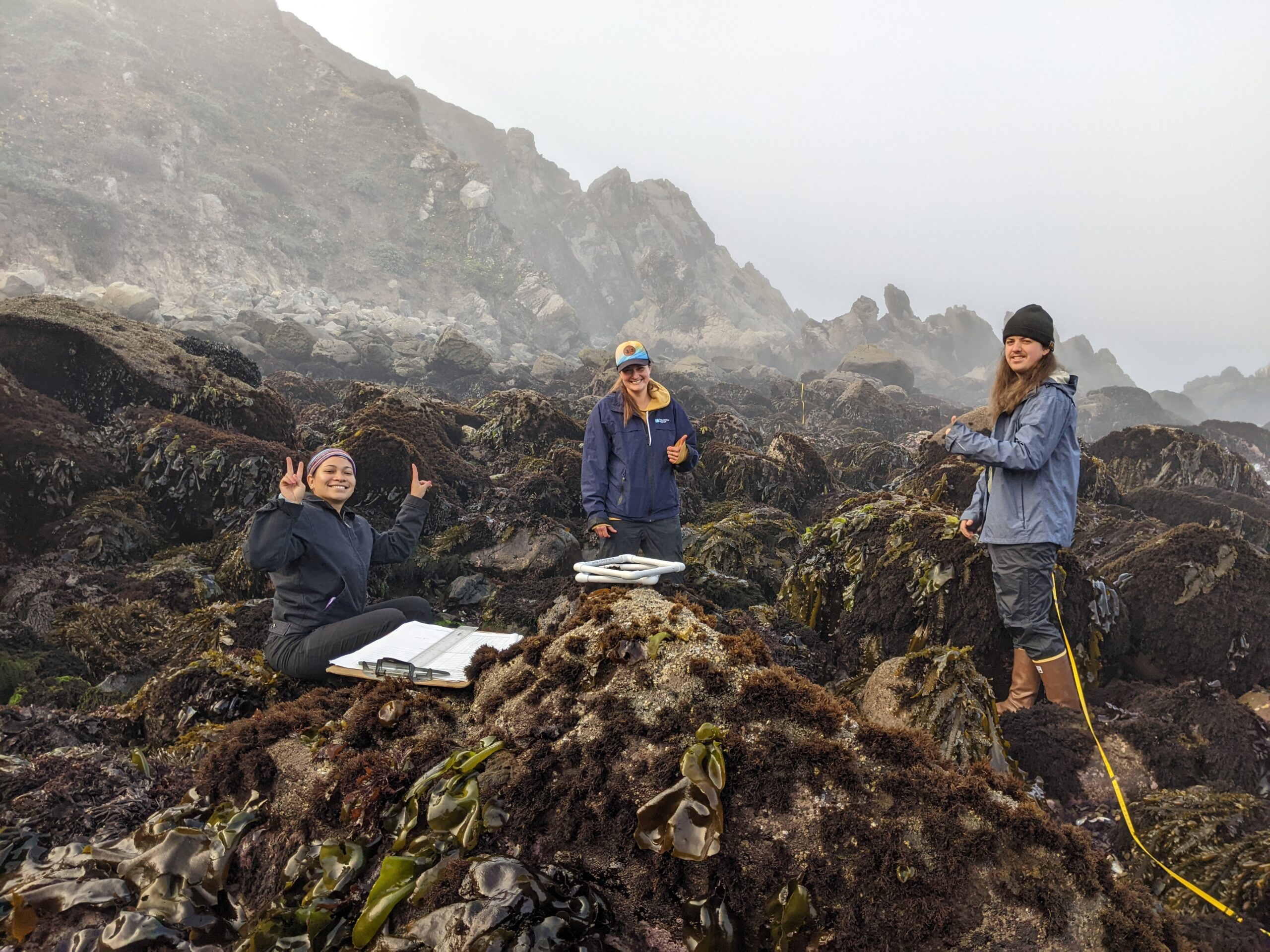
In response to the devastating loss of bull kelp forest habitat off the Sonoma-Mendocino coast, Greater Farallones Association and Greater Farallones and Cordell Bank National Marine Sanctuaries, in partnership with many various partners, are working to restore this important habitat within Greater Farallones National Marine Sanctuary.
Greater Farallones National Marine Sanctuary borders the entirety of the Sonoma County coastline and a stretch of the Mendocino County coastline – where bull kelp forests historically thrived. National marine sanctuaries represent our nation’s most ecologically significant waters, serving as refuges for ocean biodiversity. Focusing the effort to restore this crucial coastal habitat within the boundaries of a nationally and internationally recognized marine protected area means we can build upon a foundation of effective, science-informed conservation for the best chance at restoring this vital coastal ecosystem.
This effort is guided by the Sonoma-Mendocino Bull Kelp Restoration Plan, which was informed through expert and community input provided by Greater Farallones National Marine Sanctuary through its advisory council in 2018. The plan identifies four restoration sites within the sanctuary that have the most potential for successful bull kelp recovery: Fort Ross Cove, Timber Cove, Stillwater Cove, and Ocean Cove. These sites were also prioritized because they are more accessible than other locations, an important factor on California’s rugged north coast.
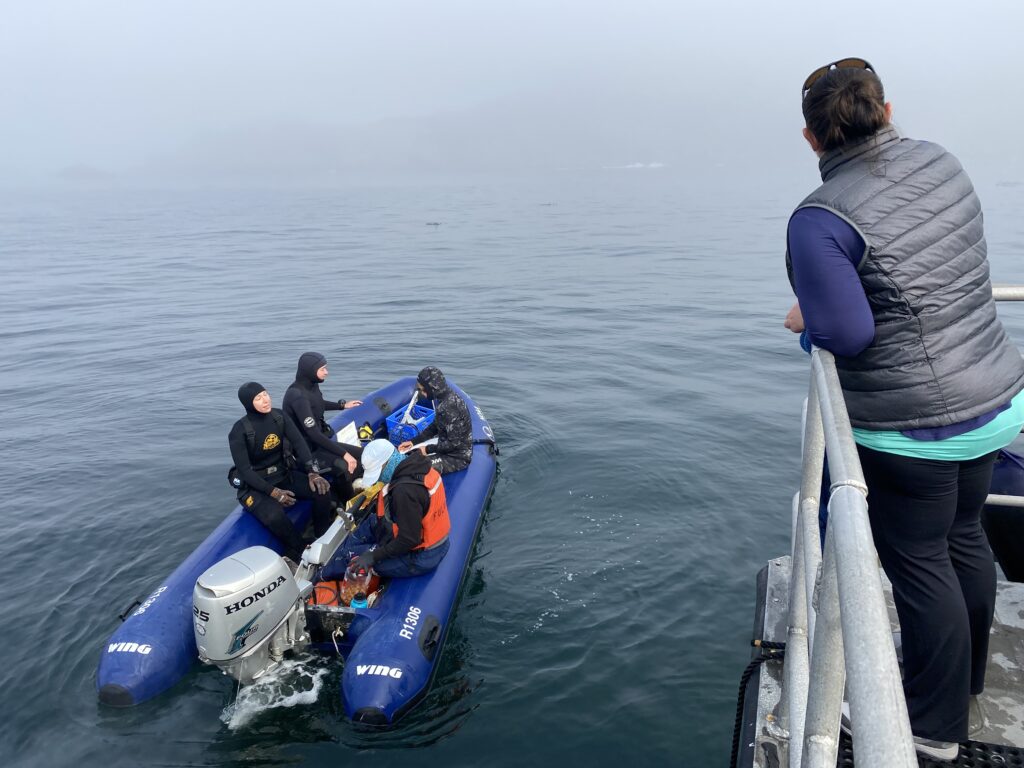
Kelp team conducting field work on a foggy day.

Ocean Cove, one of the identified sites for kelp forest restoration.
Greater Farallones Association and Greater Farallones and Cordell Bank National Marine Sanctuaries, in partnership with NOAA Fisheries Office of Habitat Conservation, California Department of Fish and Wildlife, Sonoma State University, and Moss Landing Marine Labs, have been hard at work this year studying best methods for bull kelp restoration. Kelp restoration is a new field of restoration, and our goal is to dive into active restoration activities with a well-informed toolkit in hand. We hope to apply these findings to inform how other groups can effectively restore kelp in other locations as well.
In addition to ongoing monitoring of kelp presence and research into best methods for kelp “planting” (or “outplanting” as it’s known), we began efforts to remove purple urchins from our priority restoration sites at Fort Ross Cove and Timber Cove. Our goal is to reduce the density of purple urchins, outplant kelp spores that were cultured in the lab, and then continue to keep encroaching urchins at bay to let the kelp to grow. The hope is that once full-grown kelp has space to thrive, more spores will be naturally released and recovery along the coast will follow.
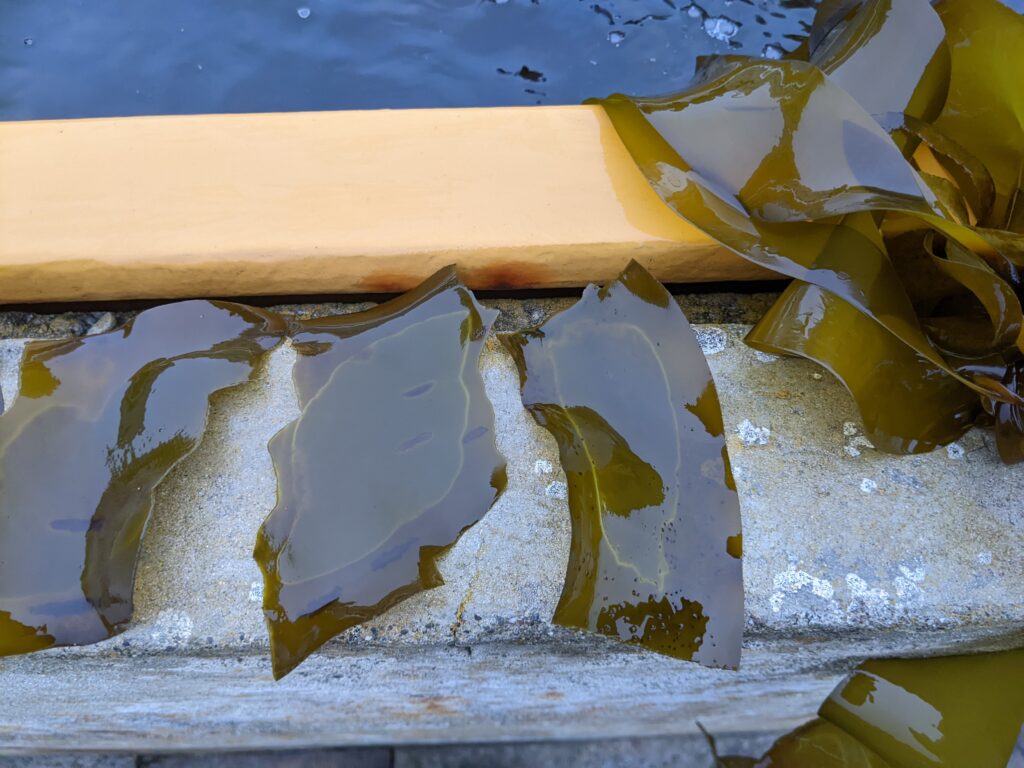
Sori (reproductive tissue) of bull kelp cultured at Bodega Marine Lab.
Purple urchins are voracious kelp-eaters and removing them gives kelp a fighting chance to rebound. These colorful, spiky invertebrates are a native species on our coast, but their populations have proliferated to unprecedented levels. Our vision is of a return to a balanced ecosystem in which purple urchins are plentiful, but not too plentiful, and kelp grows tall and strong, once again producing enough food and shelter to support this rich and vital ecosystem.
To do this, Greater Farallones Association is leveraging the skills and know-how of those who are best suited to collect urchins from these waters: local commercial divers. The loss of bull kelp forests contributed to the collapse of the commercial red sea urchin fishery, leaving many commercial divers out of work. With proper permits in hand, a number of these divers are heading out to our restoration sites to collect purple urchins (which, due to overpopulation and little kelp left to eat, have become too small and undernourished to be commercially viable).
Once they are landed, Greater Farallones Association is purchasing the urchins from the divers and donating them to be used for compost, research projects, or education programs.
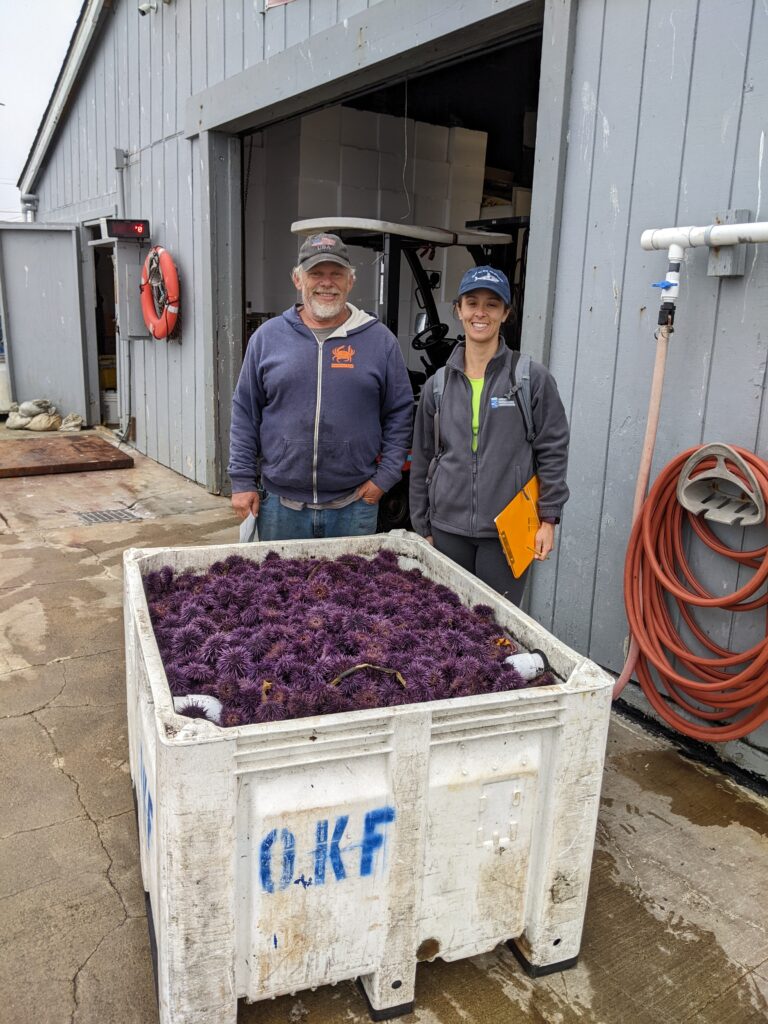
Dr. Gina Contolini, Kelp Restoration Specialist, and Erik Owens, a local urchin diver, standing beside landed urchins.
These efforts will continue when our next kelp restoration field season begins in the late spring or early summer of 2024. Stay tuned!
Follow us on Instagram, Facebook, and X or sign up for GFA’s E-News to keep up with this and our other conservation projects.
You can also follow the Greater Farallones and Cordell Bank National Marine Sanctuaries on Facebook and Twitter.
